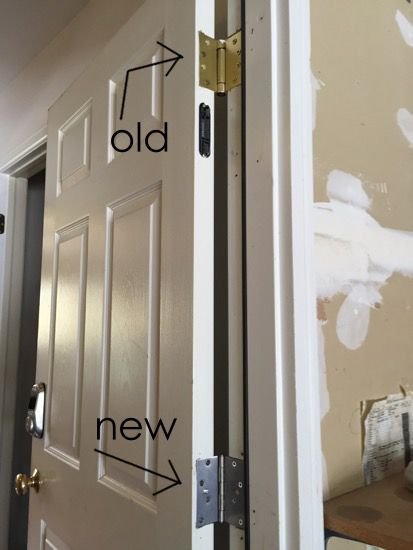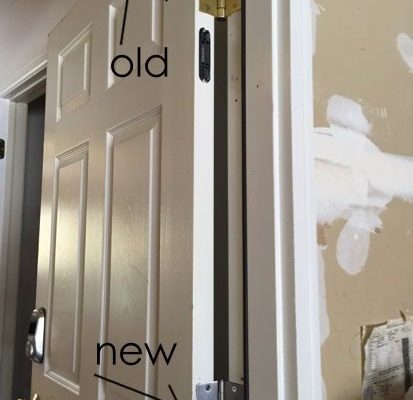
Imagine your door hinges as a team of athletes. If one player isn’t pulling their weight, it can affect the entire squad’s performance. In practical terms, if you’ve got one creaking hinge, you might wonder if the others are on the verge of failure too. Just like a good sports team, it’s vital for all parts to work together for a smooth game. So, let’s break down when it’s best to replace all the hinges versus just one.
Understanding Door Hinge Basics
Before we explore the right time to replace the hinges on your interior door, it pays to understand what a hinge actually does. A hinge is a mechanical device that connects a door to its frame. It allows movement, making it possible to open and close the door easily. Most interior doors use standard butt hinges, which consist of two plates attached to the frame and the door respectively, with a pin running through the center to hold them together.
Over time, the metal can wear down, and you may find that your door doesn’t open smoothly anymore. You might also notice other signs, like rust or paint chipping off. Knowing the basic structure of your door’s hinges helps you troubleshoot issues effectively.
Signs You Need to Replace Just One Hinge
So, when should you consider replacing just one hinge? There are a few clear indicators that suggest this route might be sufficient.
- Creaking Sounds: If one hinge is making noise but the others are quiet, it’s likely that hinge is the troublemaker.
- Visible Damage: Look for rust, bending, or missing screws on just one hinge. If it’s the only one showing wear, it’s a good candidate for replacement.
- Door Alignment Issues: Sometimes, a single misaligned hinge can cause the entire door to sag. If you notice this, replacing the faulty hinge can rectify the issue without needing to swap all of them out.
Replacing one hinge is usually a quick fix and can save you time and money. But remember, it’s important to assess the overall condition of your door hinges to avoid future hassles.
When to Replace All Hinges
Now, let’s talk about the scenario where you should consider replacing all hinges on your interior door. Here’s the deal: if you’re having multiple issues or if your door is older, it might be time for a full overhaul.
- Age of the Door: If your door is decades old, it’s likely that the hinges are too. Old hinges can wear out together, leading to similar issues across the board.
- Frequent Use: Doors that get a lot of traffic can wear their hinges down more quickly. If one hinge is bad, the others might not be far behind.
- Overall Performance: If your door is hard to open or close, and multiple hinges are showing wear, it’s a good call to replace them all. This ensures that the door functions smoothly in the long run.
Replacing all the hinges at once can save you from future headaches. It ensures consistency in function and appearance, plus it can be a great opportunity to upgrade to stronger or rust-resistant materials if needed.
Comparing Costs: One vs. All Hinges
You might be wondering about costs when taking on this project. Replacing one hinge is almost always more budget-friendly than replacing all of them. However, consider the long-term value.
- Cost of a Single Hinge: A single hinge can cost anywhere from $3 to $10, depending on the type. Installation is straightforward and can usually be done in less than an hour.
- Cost of Multiple Hinges: If you decide to replace all hinges, the cost could range from $30 to $50 or more, along with additional installation time. But think of it as an investment—one that saves money on future repairs.
Taking the time to weigh your options can help you make the best choice for your door and your wallet.
DIY vs. Hiring a Professional
When it comes to replacing hinges, you have a choice between doing it yourself or hiring a professional.
If you’re a DIY enthusiast, replacing a hinge isn’t too complicated. You’ll need some basic tools, like a screwdriver, and follow these steps:
1. Remove the Old Hinge: Unscrew the old hinge from the door and frame.
2. Align the New Hinge: Position the new hinge in the same location.
3. Secure It: Screw it back into place, making sure it’s tightly fitted.
If you’re replacing multiple hinges, the process is similar for each one.
On the other hand, hiring a professional may save you time and ensure everything is done perfectly. If you’re unsure about your skills or just prefer to focus on other tasks, this might be the way to go.
Maintenance Tips to Extend Hinge Life
Adopting some maintenance routines can help prolong the life of your door hinges. Here are a few simple tips to keep them in great shape:
- Lubricate Regularly: Use a light machine oil or silicone spray to keep hinges moving smoothly. Just a few drops every few months can make a difference.
- Check for Rust: Keep an eye on your hinges for signs of rust. If you notice it, you can treat it with rust remover or consider replacing them.
- Tighten Screws: Sometimes, loose screws can cause misalignment. Regularly check and tighten any loose screws to keep unnecessary strain off your hinges.
Simple maintenance can help you avoid the hassle of replacing hinges too often, which saves money in the long run.
Deciding whether to replace just one hinge or all of them on your interior door is about assessing the condition and needs of your doors. If you notice sound issues or minor damage, replacing a single hinge can be enough. However, if your door is showing signs of wear and age, taking a comprehensive approach and replacing all hinges might be the smarter move.
Remember, hinges are often unsung heroes in your home, quietly supporting your doors. With the right care, they can last for years. Whether you take on the job yourself or call in a pro, keep these tips in mind, and your doors will swing smoothly for years to come.
